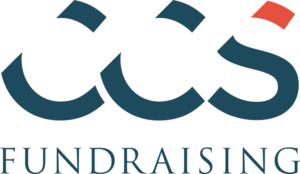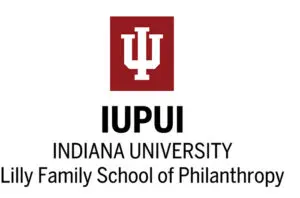

Join the conversation! Use #CCSGivingUSA.
Our keynote speaker, Dr. Una Osili, who leads the research and production of Giving USA: The Annual Report on Philanthropy, a publication of the Giving USA Foundation, reveals new data from the 2023 report. Our esteemed panelists then discuss the significance and implications of 2022’s trends.
PRESENTED BY
Frequently Asked Questions (FAQs)
On Trends:
Does the increase in giving to foundations indicate that more donors are making gifts through Donor-Advised Funds (DAFs)?
Giving USA nets out contributions to and grants from DAFs for community foundations to reduce double counting. Other factors, such as the rapid growth in the number of foundations and the value of the assets held by foundations over time, help to explain the growth in giving by foundations.
Giving to foundations has had an above-average number of mega-gifts in recent years, which makes the series a bit less obviously tied to year-to-year economic trends. We’ll see if this is an anomaly or a new trend as we move forward.
If corporations have stepped up in the last few years, why was the percentage of Corporate Giving as a share of total giving only 1% higher in 2022 than it was 40 years ago? Are corporations giving through foundation vehicles—meaning their funding is not counted in the Corporate category?
Giving from corporate foundations is included in the giving by foundations estimate. Though corporations are not growing as a share of total giving, they are still growing over time. In the last 5 years, giving by corporations had an annualized average growth rate of 10.6%, far outpacing the growth in total giving over the same period (3.3%).
Is there any data to demonstrate that a decrease in individual giving may be a response to mega giving?
What evidence we have points to this not mattering as much; a recent report, What America Thinks About Philanthropy, asked non-donors about their motivations to not give, and only 3% said it was because they felt their gift did not matter relative to the larger gifts made by the wealthy.
What contributed to the large negative percent change in giving to public society benefit organizations in 2022?
Generally, Giving USA has seen strong linkages between stock market growth and growth in giving to the public-society benefit subsector. The decline in 2022 suggests that the subsector may also be sensitive to declines in the market.
Does Giving USA have any data to support the idea that—given the acute crises of 2020-2021—some philanthropists front-loaded their giving and so had less philanthropic funds to draw from in 2022?
There is limited data about donor fatigue and the effect of ongoing crises on charitable giving behaviors. More information is needed before we can understand whether and how individual giving patterns changed in response to the events ushered in by the pandemic.
How does GoFundMe factor into giving numbers for 2022? Could it help explain the decrease in individual giving?
When GoFundMe campaigns go to a nonprofit organization, Giving USA is capturing those donations. For instance, many of the largest GoFundMe campaigns in response to the Highland Park shooting went to VictimsFirst, a nonprofit that specializes in distributing funds to victims of shootings and their families. Their estimate would capture that data. Gifts that go directly to individuals are not included in their estimate.
Are mega-donors giving in any unique ways? How do they compare in their involvement?
MacKenzie Scott continues to give smaller gifts to hundreds of organizations year over year, which is generally acknowledged to be an unconventional approach. However, Giving USA does not compare the giving of mega-donors. The Giving Pledge, the movement in which philanthropists make a public commitment to giving the majority of one’s wealth to charitable causes, includes letters from signees explaining their decision to sign the pledge. Other measures of giving from mega-donors are available, including the Chronicle of Philanthropy’s Philanthropy 50 list and the Forbes 400 Philanthropy Score.
Has Giving USA noted a correlation between volunteering and philanthropy? How many donors are volunteering?
In general, research has shown a relationship between volunteering and charitable giving. However, Giving USA does not measure volunteering activity. More information on volunteering trends can be found at the Generosity for Life project.
How are nonprofits using AI and how do you think that will change in the future?
Many nonprofits are exploring new tools like AI to address the ongoing decrease in the number of donors. CCS Fundraising’s Revolutionizing Fundraising series explores real-time examples of this work and how you can apply AI techniques to your fundraising plan and outcomes.
On Methodology and Definitions:
How does Giving USA collect data?
Giving USA estimates primarily rely on econometric methods developed by leading researchers in philanthropy and the nonprofit sector and are reviewed and approved by members of the Giving USA External Review Panel. Members of the External Review Panel include research directors from national nonprofit organizations, as well as scholars from such disciplines as economics and public affairs, all of whom are involved in studying philanthropy and the nonprofit sector.
The Indiana University Lilly Family School of Philanthropy prepares all of the estimates in Giving USA for Giving USA Foundation. Giving USA develops estimates for giving by each type of donor (sources) and for recipient organizations categorized by subsectors (uses). Most of Giving USA’s annual estimates are based on econometric analyses and tabulations of tax data, economic indicators and demographics. Data for giving by foundations come from Candid.
Following the same approach used by leading public and private institutions that develop economic statistics, Giving USA researchers update data found within Giving USA each year. This is because current Giving USA estimates are developed before final tax data, some economic indicators, and some demographic data are available. The estimates are revised and updated as final versions of these data become available. Final estimates are usually developed two or three years after their initial release.
For more specific details on Giving USA’s methodology, please refer to the “Brief summary of methods” section within Giving USA 2023 or contact the Indiana University Lilly Family School of Philanthropy at adrldavi@iupui.edu
Is the 2021 giving total of $516.65 a re-estimated number and, if so, by how much?
Giving USA revises the giving estimate as additional data comes in each year, similar to the way that other economic series like GDP are revised. According to their revised estimate, total giving reached $516.65 billion in current dollars in 2021. In the case of 2021, there were three separate upward revisions, all unrelated, to individual, corporate, and foundation giving that contributed to the large upward revision overall. Giving USA typically revises numbers for at least two years. From 2011-2020 (the most recent ten years of virtually final data) the average revision was 0.83% and median was 0.31%.
How does Giving USA define Mega-gifts?
Giving USA defines mega-gifts as being greater than 0.1% of total giving each year, rounded to the nearest $50M. So, this year, mega-gifts were gifts of $500M or more.
Are Donor-advised funds (DAFs) counted under Foundation or Individual giving?
On the sources side, contributions to donor-advised funds are counted in whichever category the DAF contribution is made—most commonly, this would be in “by individuals” when an individual gives to a DAF and deducts the initial donation.
On the uses side, DAFs are counted wherever the organization that hosts the donor-advised fund is counted. For example, a donor-advised fund held within a community foundation will be counted with community foundations in the giving to foundations subsector. Freestanding donor-advised funds, such as Fidelity Charitable, for example, are counted in the Public-Society Benefit subsector on the uses side.
For all types of donor-advised funds, including DAFs held at community foundations, Giving USA takes the net of incoming contributions and outgoing grants when tabulating giving to the recipient subsectors, as donor-advised funds function as a pass-through. This approach helps to reduce the double-counting of contributions to these funds and recipient organizations.
Is giving by family foundations included in the Foundations estimate?
Yes, the giving by foundations estimate includes giving by family foundations. The growth in the use of family foundations as a giving vehicle may have been a factor in changing the shares of total giving comprised of individual giving and foundation giving in the last few decades—more research on this topic is needed.
Is giving by corporate foundations counted in Corporations or Foundations?
Corporate foundations are counted under giving by corporations.
Is individual giving (tithing) to churches included in the estimate for giving to religion?
Yes—Giving USA’s religion estimate includes giving to congregations.
Under what subsector does Giving USA count giving circles?
It depends on the fiscal sponsor for the giving circles. Many giving circles are hosted by foundations, and the grants made from those giving circles would be counted under giving by foundations.
How does Giving USA differentiate the Public-Society Benefit subsector from the Human Services subsector?
The Public-society benefit subsector includes a wide range of organizations, including national donor-advised funds (DAFs) such as Fidelity Charitable, pass-through organizations such as the United Way, Jewish federations, rights and legal advocacy funds, and community/economic development groups such as Community Development Financial Institutions (or CDFIs).
Human services organizations include those related to food and nutrition; housing and shelter; employment services and vocational training; youth services; public safety and community disaster relief; legal services; recreation and sports; family and children’s services; emergency assistance; and independent living and self-sufficiency for a wide range of populations.
In general, Giving USA uses the National Taxonomy of Exempt Entities (NTEE) codes to categorize nonprofits.
Does Giving USA count giving to faith-based human services, education, and healthcare organizations under their functional categories, or is it all counted under Religion?
Giving USA’s tabulation of giving to the religion subsector is very focused: it includes giving to support religious congregations and houses of worship; the organizing or national offices of denominations and faith groups; missionary societies; religious media (including print and broadcast); and organizations formed for religious worship, fellowship, or evangelism.
Contributions to faith-based organizations offering healthcare, education, or social services, as well as those working internationally, are not included in Giving USA’s estimate for giving to religion. Rather, they are categorized within the other subsectors according to purpose.
How does Giving USA define the International Affairs subsector?
Giving USA’s estimate of giving to the international affairs subsector includes giving to organizations working in international aid, development, or relief; those that promote international understanding; and organizations working on international peace and security issues. This subsector also includes research institutes devoted to foreign policy and analysis and organizations working in international human rights. Giving USA’s estimates include donations of cash, securities, and in-kind gifts, such as food, medicine, equipment, and other items of value.
Are US government grants included in Giving USA’s estimates?
Government grants are not included in Giving USA’s estimates.
More Insights
CCS Philanthropy Pulse
Uncover the latest fundraising trends in the 2025 CCS Philanthropy Pulse report! Packed with data-rich insights from 600+ nonprofit organizations across diverse nonprofit sectors, this free report will help you plan for success in 2025.
Planned Giving in 1-3 Hours a Week
This video, presented by CCS Fundraising’s Gift Planning Practice Group, will help you learn how you can make significant advances with planned giving — in just 1-3 hours a week!





